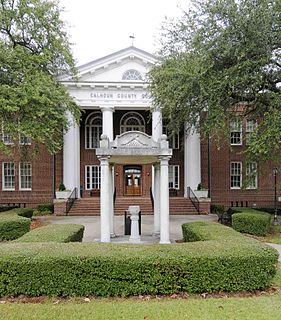
St. Matthews is a town in Calhoun County, South Carolina, United States. The population was 2,021 at the 2010 census, a decline from 2,107 in 2000. It is the county seat of Calhoun County.
The Cherokee Path was the primary route of English and Scots traders from Charleston to Columbia, South Carolina in Colonial America. It was the way they reached Cherokee towns and territories along the upper Keowee River and its tributaries. In its lower section it was known as the Savannah River. They referred to these towns along the Keowee and Tugaloo rivers as the Lower Towns, in contrast to the Middle Towns in Western North Carolina and the Overhill Towns in present-day southeastern Tennessee west of the Appalachian Mountains.
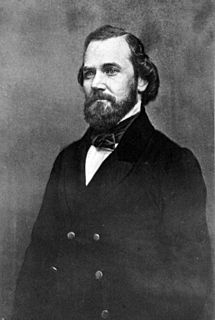
Laurence Massillon Keitt was an American planter, lawyer, politician, and soldier from South Carolina. During his tenure in the United States House of Representatives, he was included in several lists of Fire-Eaters—men who adamantly urged the secession of southern states from the United States, and who resisted measures of compromise and reconciliation, leading to the American Civil War.

Ridgedale is a 19th-century Greek Revival plantation house and farm on a plateau overlooking the South Branch Potomac River north of Romney, West Virginia, United States. The populated area adjacent to Washington Bottom Farm is known as Ridgedale. The farm is connected to West Virginia Route 28 via Washington Bottom Road.
William Augustus Edwards, also known as William A. Edwards was an Atlanta-based American architect renowned for the educational buildings, courthouses and other public and private buildings that he designed in Florida, Georgia and his native South Carolina. More than 25 of his works have been listed on the National Register of Historic Places.

The Modjeska Monteith Simkins House is a historic place of the civil rights movement. The house, which was owned by Modjeska Monteith Simkins, is located at 2025 Marion Street in Columbia, South Carolina. On March 25, 1994, it was named to the National Register of Historic Places.

Woodburn or the Woodburn Plantation is an antebellum house near Pendleton in Anderson County, South Carolina. It is at 130 History Lane just off of U.S. 76. It was built as a summer home by Charles Cotesworth Pinckney. Woodburn was named to the National Register of Historic Places on May 6, 1970. It also is part of the Pendleton Historic District.
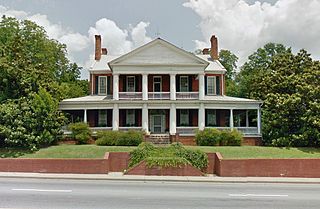
Foster's Tavern is an upcountry 19th century historic landmark building in Spartanburg County, South Carolina, located at 191 Cedar Springs Road at the intersection of the old Pickneyville and Georgia roads. As of May 2010, it was in private ownership. It is believed to be the oldest brick house in Spartanburg South Carolina, and was listed on the National Register of Historic Places on December 18, 1970.

The Corner Store and Office, also known as the Frogmore Emporium, Macdonald, Wilkins, and Company Store and Mark D. Batchelder Office, is a historic general store, residence and, eventually, office building located on Saint Helena Island near Frogmore, Beaufort County, South Carolina. Primarily built as a house, it was built about 1877, and is a two-story, wood-frame building with a gable roof. It features a two-story wraparound porch. The adjacent one-story house was built about 1905. The store sold provisions to the islanders, most of whom were African American, and became one of the major centers of commercial and social activity on St. Helena. The home and businesses in the building were owned by Cameron Thomas and his relatives for most of the 20th century. The family lived in the back and upstairs portion of the house, while the front included a general store and liquor store, with the small house added on used as a residence for relatives. The store also had the only gas pump on the island for many years.
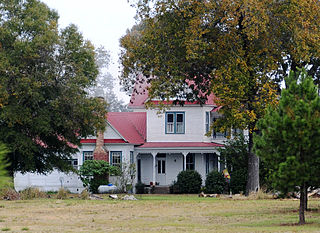
Haigler House is a historic home located near Cameron, Calhoun County, South Carolina with approximately fifteen acres of land. It was built in 1893 by Thomas Shadrack Haigler, and is a simple two-story, frame, Queen Anne style farmhouse accentuated with Folk Victorian decorative details. The house features approximately 3,000 square feet of exterior porches with decorative spindlework and carved brackets. The property also includes an ice house, a spring house, and a chicken coop / pony stall. Cotton fields surround the house and are still cultivated today.

Ulmer-Summers House is a historic home located near Cameron, Calhoun County, South Carolina. The original section was built in the late-18th century and was constructed on land originally granted to John Jacob Ulmer in 1757. It is a clapboard frame structure on a low brick foundation and medium-gable roof and an in antis front porch. The house was remodeled in 1960. For a period in excess of 200 years, the Ulmer and Summers families cultivated the land surrounding their house, raising indigo, cotton, grain, and pecans.

Midway Plantation is a historic plantation house located near Fort Motte, Calhoun County, South Carolina. The original Midway plantation was built about 1785, although little of this structure remains. The present façade was added about 1859, and is a two-story antebellum frame building with both Greek Revival and Federal influences. The front façade features a pediment and a two-tiered portico with four Tuscan order columns on both levels. The rear wing and porch were added around 1900.
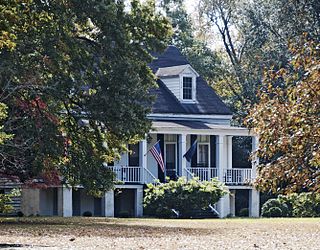
Oakland Plantation is a historic plantation house located near Fort Motte, Calhoun County, South Carolina. It was built about 1800, and is a 1+1⁄2-story clapboard house with two flanking wings set back from the façade. The house sits on a brick foundation and has an enclosed basement. It has a front porch, supported by six square columns. Oakland is still surrounded by farmland, and the house and one outbuilding, the original kitchen, are situated on a one-acre lot.

Zante Plantation was a historic plantation house located near Fort Motte, Calhoun County, South Carolina. It was built about 1815, and is a 2+1⁄2-story frame structure with Federal details. It has a stucco-over-brick foundation approximately seven feet high. Both front and rear facades have one-story porches. Several original outbuildings remain on the property. Zante has been the home of several prominent South Carolinians, its history reaching as far back as the late-18th century.

Col. J. A. Banks House is a historic home located at St. Matthews, Calhoun County, South Carolina. It was built about 1893, and remodeled in 1909–1910. It is a two-story, asymmetrical plan dwelling that incorporates both Classical and Victorian elements. The house features two Neo-Classical colossal Corinthian order porticos and gable pediments with Palladian windows. Also on the property are two one-story, weatherboarded contributing outbuildings: a fowl house and a workshop. It was the home of South Carolina State Representative and State Senator Col. J. A. Banks.

Col. Olin M. Dantzler House, also known as Crutchfield House, is a historic home located at St. Matthews, Calhoun County, South Carolina. It was built about 1852, as a one-story, rectangular, raised cottage with truncated, hipped roof. Also on the property are a barn, several sheds, visitors’ cottage and a pigeon house. It was originally used as a seasonal residence for the Jacob M. Dantzler family of Orangeburg County. The house is the oldest standing residence in St. Matthews.

David Houser House, also known as Oak Grove, is a historic home located near St. Matthews, Calhoun County, South Carolina. It was built in 1829, and is a two-story, rectangular wood frame I-house with a gable roof and stuccoed brick chimney. It has a one-story front porch and rear addition. Also on the property are the original smokehouse, a part of the 19th century Dutch oven, a frame building believed to have once been bedrooms attached to the rear of the house, a barn, a servant's house, a workshop, and the family cemetery where David Houser is buried.

Calhoun County Library is a historic library building located at St. Matthews, Calhoun County, South Carolina. It was built about 1877, and is a one-story, medium-gabled white clapboard structure in the Greek Revival style. It was originally built as a residence, but was adapted for use as a county library in 1949. The front façade features a three-bay, square-columned entrance porch, with smaller porches of similar design on the flanking wings. The library is one of St. Matthews' oldest buildings.

Jefferies House, also known as the Jolly House, is a historic home located at Gaffney, Cherokee County, South Carolina. It was built in 1884, and is a two-story, frame, Italianate style dwelling. It is asymmetrical and features a large one-story porch on the main façade and a two-tiered porch on the right elevation. Also on the main façade is a one-story square bay window with decorative brackets. It is one of the oldest and most significant residences remaining in Gaffney.

John Jacob Calhoun Koon Farmstead is a historic home and farm located near Ballentine, Richland County, South Carolina, USA. The house was built in about 1890, and is a two-story farmhouse with a two-tiered Victorian influenced wraparound porch. It has a one-story, gable roofed frame rear addition. Also on the property are the contributing frame grain barn, a frame cotton house, a frame workshop/toolhouse, a late-19th century shed, a planing shed and a sawmill.






















